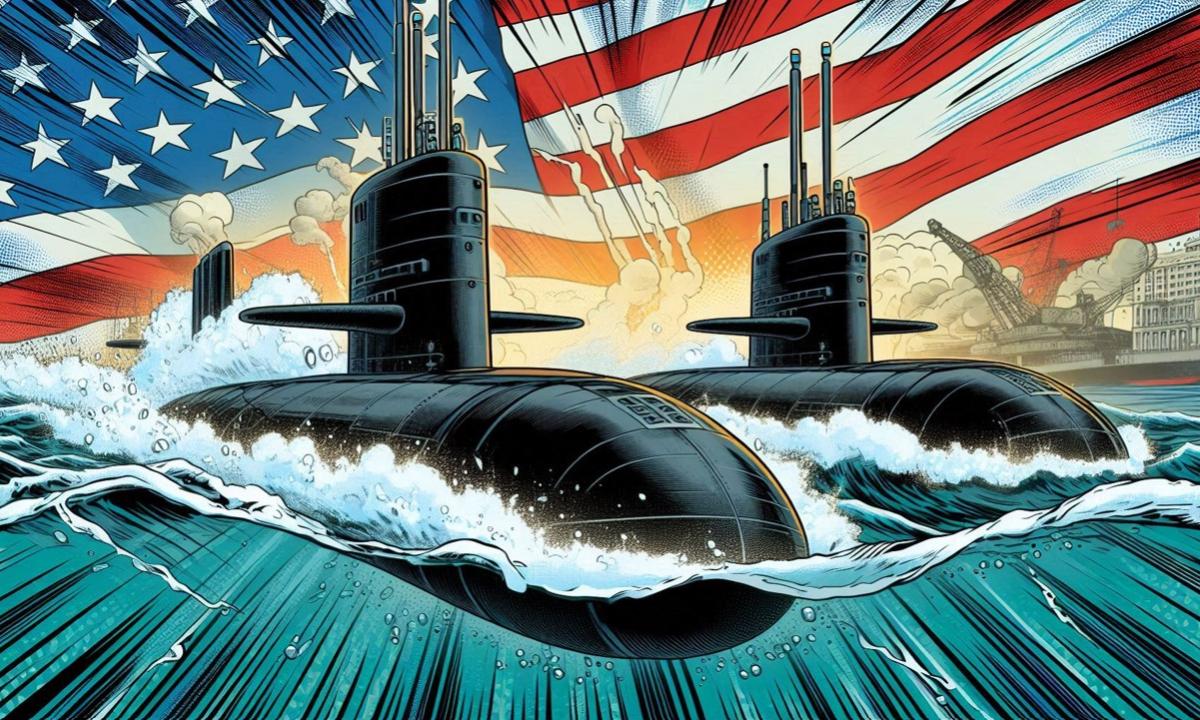
Donald Trump's nuclear war threat – only a storm in a teacup?
Introduction
The West is losing its military wars in Europe and in the Middle East. Russia is now crushing the third “Ukrainian” army equipped by NATO and financed by the West. Iran's counterstrike against USraeli aggression recently destroyed Israel to such an extent that further open acts of war by the West against Iran had to be suspended for the time being. Western air defenses had and still have no effective means against the superior Russian and Iranian missiles and drones. As a result, the West no longer has any means of escalation dominance in conventional warfare. This now lies entirely with Russia and Iran.
However, since the West has not abandoned its war aims of regime change in Russia (in order to subsequently fillet and gut the country) and in Iran (in order to regain control of the Middle East), the countries concerned must continue to prepare themselves for corresponding decapitation strikes. As a military means, the West ultimately has no choice but to resort to nuclear weapons, because its conventional weapons are failing.
Against this backdrop, Dmitry Medvedev (President of the Russian Federation from 2008 to 2012, 2012–2020 Prime Minister of Russia, since 2020 Deputy Chairman of the Security Council) pointed out in a post on July 31, 2025, in response to provocations by Donald Trump, that Russia still has defensive means against an American first strike with nuclear weapons. Donald Trump responded with a nuclear escalation in the submarine war. So are we really heading for a nuclear escalation that will end in the destruction of the world, or is this just a storm in a teacup? In our view: neither - nor. An analysis.
Social media squabbling with a serious background
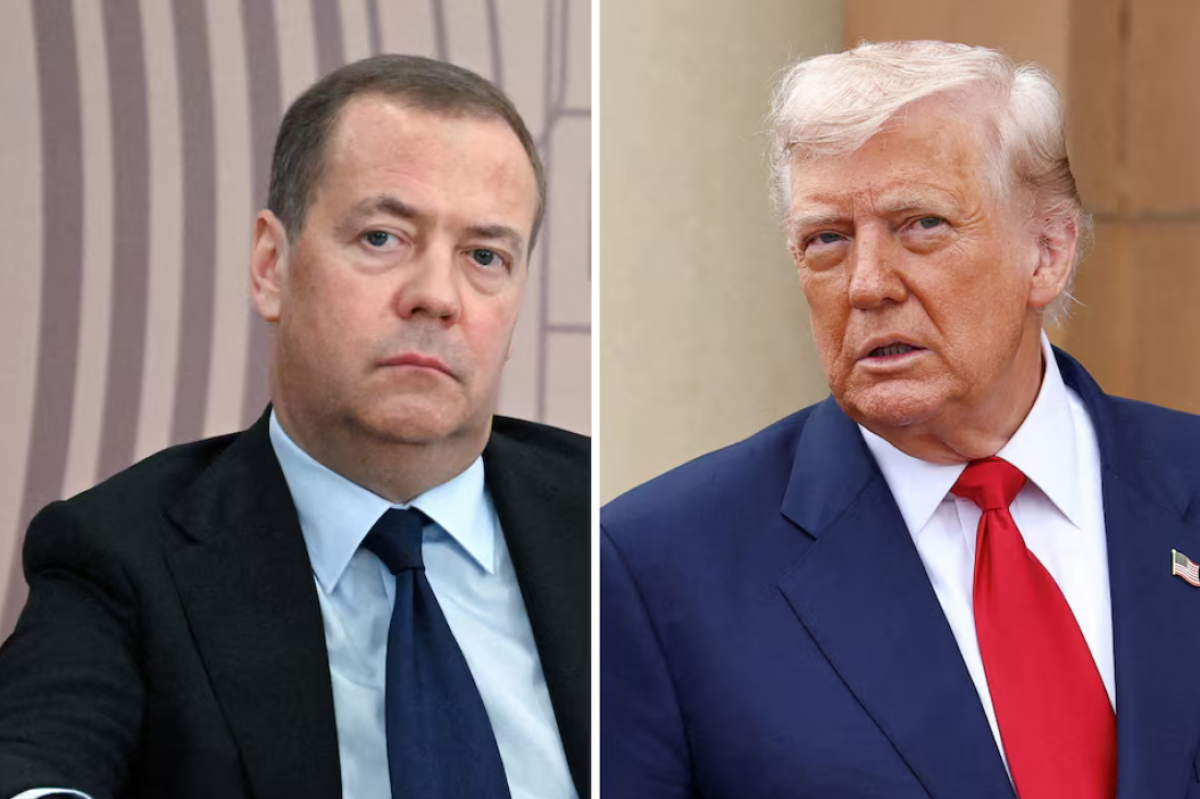
In the hybrid war against Russia and those whom Donald Trump considers to be Russia's supporters, he announced on Truth Social on July 30, 2025, a 25% import tax on goods from India starting August 1, citing India's energy and arms purchases from Russia as one of the reasons. At the same time, he threatened secondary tariffs of up to 100% if India or other countries continued to import Russian oil, unless Russia agreed to a ceasefire by around August 8.
Dmitry Medvedev described Trump's ultimatums not only as threats, but specifically as blackmail, and warned urgently of a possible escalation of the conflict.
In a post on X (formerly Twitter), he wrote:
“The language of ultimatums, blackmail, and threats is unacceptable to us.”
Medvedev on X
He later added that the US president was playing a dangerous “game of ultimatums” that was becoming increasingly risky—not only for Russia, but also for the US itself, because:
“Every new ultimatum is a threat and a step toward war. Not with Russia or Ukraine, but with his own country.”
Medvedev on X
Trump's response came promptly on Truth Social (July 30/31, 2025):
„I don’t care what India does with Russia. They can take their dead economies down together, for all I care. We have done very little business with India, their Tariffs are too high, among the highest in the World. Likewise, Russia and the USA do almost no business together. Let’s keep it that way, and tell Medvedev, the failed former President of Russia, who thinks he’s still President, to watch his words. He’s entering very dangerous territory!“
Trump on Truth Social
Medvedev responded via Telegram on July 31, 2025 (commented with a laughing emoji):
„If a few words from the former president of Russia provoke such a nervous reaction from the mighty US president, then Russia must be completely in the right (…) And as for the ‘dead economies’ of India and Russia and ‘entering dangerous territory’ – perhaps he should revisit his favourite zombie movies and recall just how dangerous the mythical ‘Dead Hand’ can be.“
Dmitry Medvedev via Telegram
This was followed by this statement from Donald Trump:
„Based on the highly provocative statements of the Former President of Russia, Dmitry Medvedev, who is now the Deputy Chairman of the Security Council of the Russian Federation, I have ordered two Nuclear Submarines to be positioned in the appropriate regions, just in case these foolish and inflammatory statements are more than just that.
Words are very important, and can often lead to unintended consequences, I hope this will not be one of those instances.“
Trump on Truth Social
Medvedev's warning
The mythical “dead hand”
The Dead Hand (Russian: Мёртвая рука, officially Система «Периметр») is a nuclear weapons command system of the former Soviet Union and now Russia, which has existed since the 1980s. It is an automated control system designed to automatically or semi-automatically launch an all-out counterattack in the event of a nuclear decapitation strike that renders the country's leadership incapable of acting (a mythical “dead hand” can still strike back).
In the event of a nuclear attack, checks are carried out to determine whether there have been massive seismic or nuclear detonations, whether communications links to the leadership have been interrupted, and whether certain military conditions have been met. If, after activation, all criteria are met and no human counterattack order is given, Perimetr launches one or more special command missiles. These fly over Russian territory and send launch commands to all remaining strategic nuclear weapons – land-, sea- or air-based. It is therefore a kind of “last automatic strike,” even in the event of complete loss of leadership.
In other words, Medvedev is reminding the US that it will not get away with a nuclear attack on Russia, but that this would also mean its own complete destruction – a clear warning against a US first strike and not an active Russian threat with nuclear weapons, as propagated in the Western media.
Do the Russians have any reason to make such a threat to the West?
The answer can be found in the American Nuclear Weapons Employment Planning Guidance. This is a classified directive approved by the US president—most recently by Joe Biden in spring 2024—that sets out how the Department of Defense develops doctrines and options for the possible use of nuclear weapons.

Nuclear Weapons Employment Planning Guidance
Scott Ritter, a former US intelligence officer and former UNSCOM inspector, has repeatedly and increasingly pointed out in recent years that there is a mindset within the US defense and planning bureaucracies that is working toward a potentially “winnable” nuclear conflict.
In this context, Ritter recalls, among other things, statements made by Rear Admiral Thomas R. “T.R.” Buchanan.

Buchanan has been the head of the Plans & Policy Directorate (J5) at the United States Strategic Command (USSTRATCOM) since June 2024, where he is heavily involved in planning and defining US nuclear strategy. This directorate is responsible for developing and maintaining the national nuclear strategy, in particular for preparing and updating the nuclear deployment plans available to the president in the event of an escalation, developing planning options in accordance with the guidelines of the president, the secretary of defense, and the chief of the Joint Staff, and continuously analyzing and evaluating military scenarios and incorporating them into strategic planning.
Scott Ritter reports as follows: On November 20, 2024, Admiral Buchanan was the keynote speaker at the Center for Strategic and International Studies conference on nuclear issues in Washington, DC, where he drew on his experience as the person responsible for implementing the President's directives in the preparation and execution of the United States' nuclear war plans.
When asked about the concept of “winning” a nuclear war, Buchanan replied:
“It's certainly complex because we take many different approaches to discussing what the situation in the United States would look like after a nuclear exchange. And that's a scenario we want to avoid, isn't it? So when we talk about non-nuclear and nuclear capabilities, we certainly don't want an exchange, do we?”
Rear Admiral Thomas R. “T.R.” Buchanan
Right. It would have been best if he had just stopped there. But Admiral Buchanan continued.
"I think everyone would agree that if we have to have an exchange, we want to do so on terms that are most acceptable to the United States. So, terms that are most acceptable to the United States, that allow us to continue to play a leadership role in the world, right? So we are widely regarded as a world leader. And are we a world leader in an area where we have accepted losses? The answer is no, right? So it would go to a point where we would have to maintain sufficient capacity—we would have to have sufficient capacity. We would have to have reserve capacity. You wouldn't spend all your resources to win, would you? Because then you would have nothing left to deter them with at that point.“
Rear Admiral Thomas R. ”T.R." Buchanan
According to Ritter, two things can be inferred from this statement. First, the idea that the United States believes it can engage in a nuclear “exchange” with Russia and win.
Second, the idea that the United States can not only win a nuclear war with Russia, but also retain enough strategic nuclear capabilities to prevent the rest of the world from entering into another nuclear war after the nuclear war with Russia.
“Winning” a nuclear war with Russia means that the United States has a plan not only to win the war, but also a plan that allows the United States to retain enough nuclear weapons in its arsenal to remain a “world power” after a nuclear war by maintaining its doctrine of nuclear deterrence.
There is only one scenario in which the US could attempt to achieve this (in reality completely impossible) goal. This scenario involves a preventive nuclear strike against Russia's strategic nuclear forces, aimed at destroying the majority of Russia's nuclear weapons. Such an attack can only be carried out with Trident missiles stationed on board the US Navy's Ohio-class submarines.
US experts such as the Arms Control Association insist that the primary purpose remains deterrence, not active warfare. Its use would be limited to “extreme cases” (such as if NATO loses against Russia?).
And Russia is supposed to rely on that? This would be completely naive for the following reasons.
Firstly, retired Lieutenant General Keith Kellogg, who served as national security adviser to Vice President Mike Pence during Trump's presidency and is now Donald Trump's special envoy in Kiev, has suggested that the US should deploy all its ballistic missile submarines (!) to see if Putin is “bluffing.”
Second, the bloody history of regime change tactics involving murder and manslaughter by the US around the world, as outlined below, must be taken into account.
Regime change with deadly consequences
The list of Western regime change actions that ended with the death of a sitting or deposed head of government is a historically documented topic. Here is a list (not exhaustive) of such cases since the 20th century, in each of which Western influence (primarily through the US, the UK, or their allies) was decisive:
Patrice Lumumba (Congo, 1961), former Prime Minister of Congo, was assassinated. The background to this was that after Congo gained independence from Belgium, Lumumba became a target of Western intelligence agencies because of his pro-independence policies and alleged ties to the Soviet Union. The CIA and the Belgian secret service supported his political opponent Mobutu. Lumumba was eventually captured, tortured, and murdered.
Ngo Dinh Diem (South Vietnam, 1963), former president of South Vietnam, was assassinated after a military coup against him. The background to this was that Diem had lost the support of the US due to his unpopular rule and repressive policies. The CIA tacitly supported the military coup in which he was killed.
Salvador Allende (Chile, 1973), former president of Chile, allegedly committed suicide during the coup against him. Allende was a democratically elected socialist. The US (under Nixon/Kissinger) actively supported the destabilization of his government. During the military coup led by Pinochet (with CIA support), Allende allegedly took his own life during the storming of the presidential palace.
Saddam Hussein (Iraq, 2006), former president of Iraq. He was “legally” executed after being captured by US troops. The US-led invasion in 2003 overthrew Saddam under the false pretext of weapons of mass destruction. He was later sentenced to death by an Iraqi court and hanged under US supervision.
Muammar al-Gaddafi (Libya, 2011), former revolutionary leader and head of state. He was captured and murdered after a Western air war. During the Arab Spring, Western states (NATO, especially France, Britain, and the US) supported the rebellion against Gaddafi. After NATO air strikes on his convoy, Gaddafi was captured, abused, and killed.
Additional cases (without fatalities, but failed or attempted regime change): Iran 1953 (overthrow of Prime Minister Mossadegh by the CIA/MI6 – he survived but remained under house arrest); Venezuela (several coup attempts against Hugo Chávez and Nicolás Maduro); Ukraine (after the Ukrainian government under President Viktor Yanukovych did not sign the association agreement with the EU at short notice and instead wanted to deepen relations with Russia, Yanukovych had to flee to Russia to escape assassination); Syria (regime change against Assad, who was able to flee to Russia in time); Decapitation strike against Hezbollah and the failed decapitation strike against the Iranian government.
These bloody events from the past 60 years show that there is no reason to believe that the US will abandon these methods. Russia is well aware of these events and world history and will act accordingly.
Donald Trump's threat with nuclear submarines
Against this backdrop, Donald Trump's aforementioned announcement on August 1, 2025, to position two nuclear submarines “in the appropriate regions,” i.e., in the direction of Russian waters, takes on a serious character. However, the facts must also be gathered here.
Ohio submarines of the US Navy
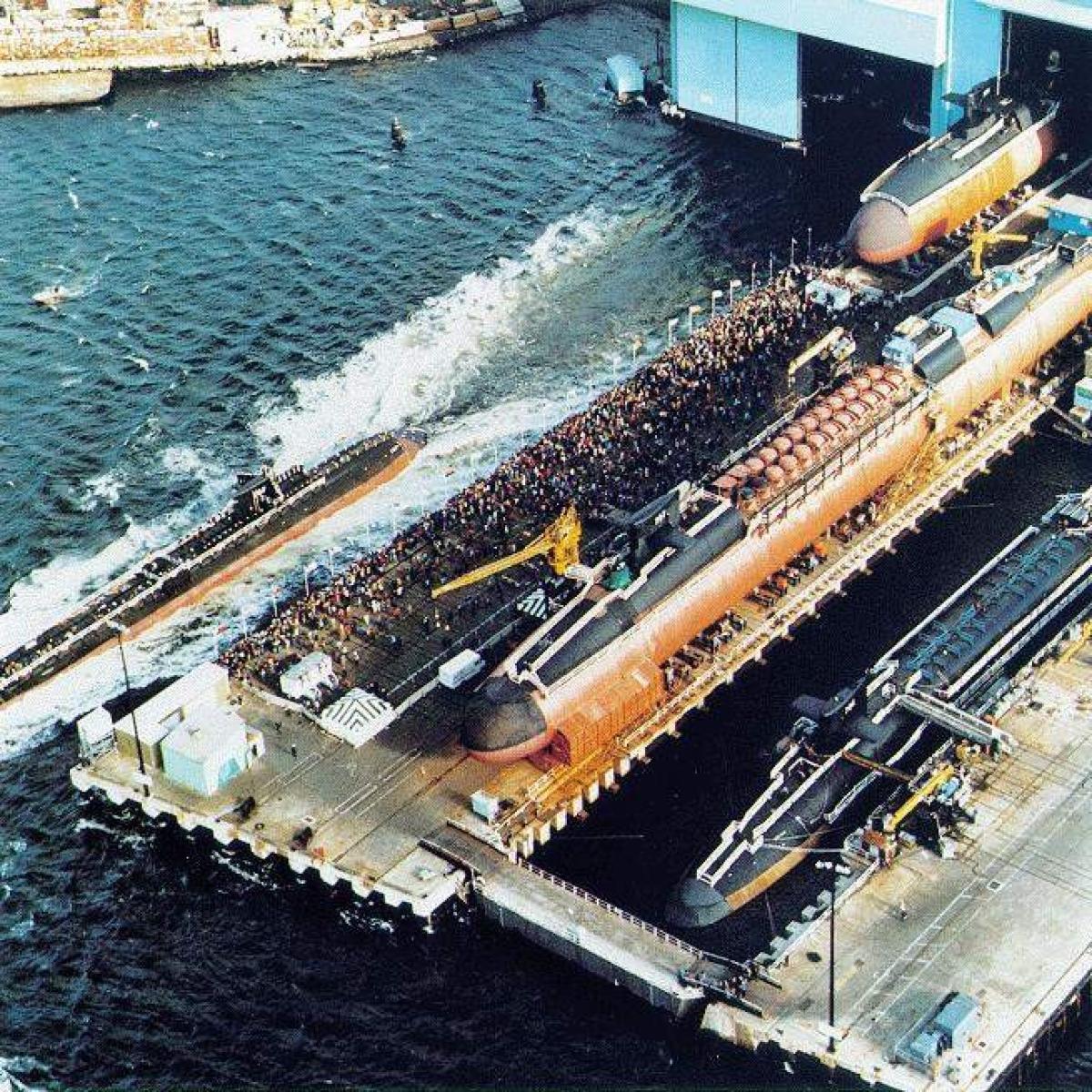
The US Navy's Ohio-class submarines (which will be replaced by the Columbia class in the future) are nuclear-powered and can operate submerged for months at a time, making them extremely difficult to detect. Their most important strength is their invisibility. Their main mission is to remain undetected, which is why they avoid coastal areas and shallow waters. They usually operate at great depths (>200 m) with a low sonar profile to avoid detection.
The strategic version of the Ohio class (Ship, Submersible, Ballistic, Nuclear – SSBN) carries up to 24 Trident II D5 intercontinental submarine-launched ballistic missiles (SLBMs) with multiple nuclear warheads (MIRVs). These missiles have ranges of over 11,000 km and can hit multiple targets simultaneously. They are equipped with solid fuel, so they do not need to be refuelled before launch and are always ready for immediate use.
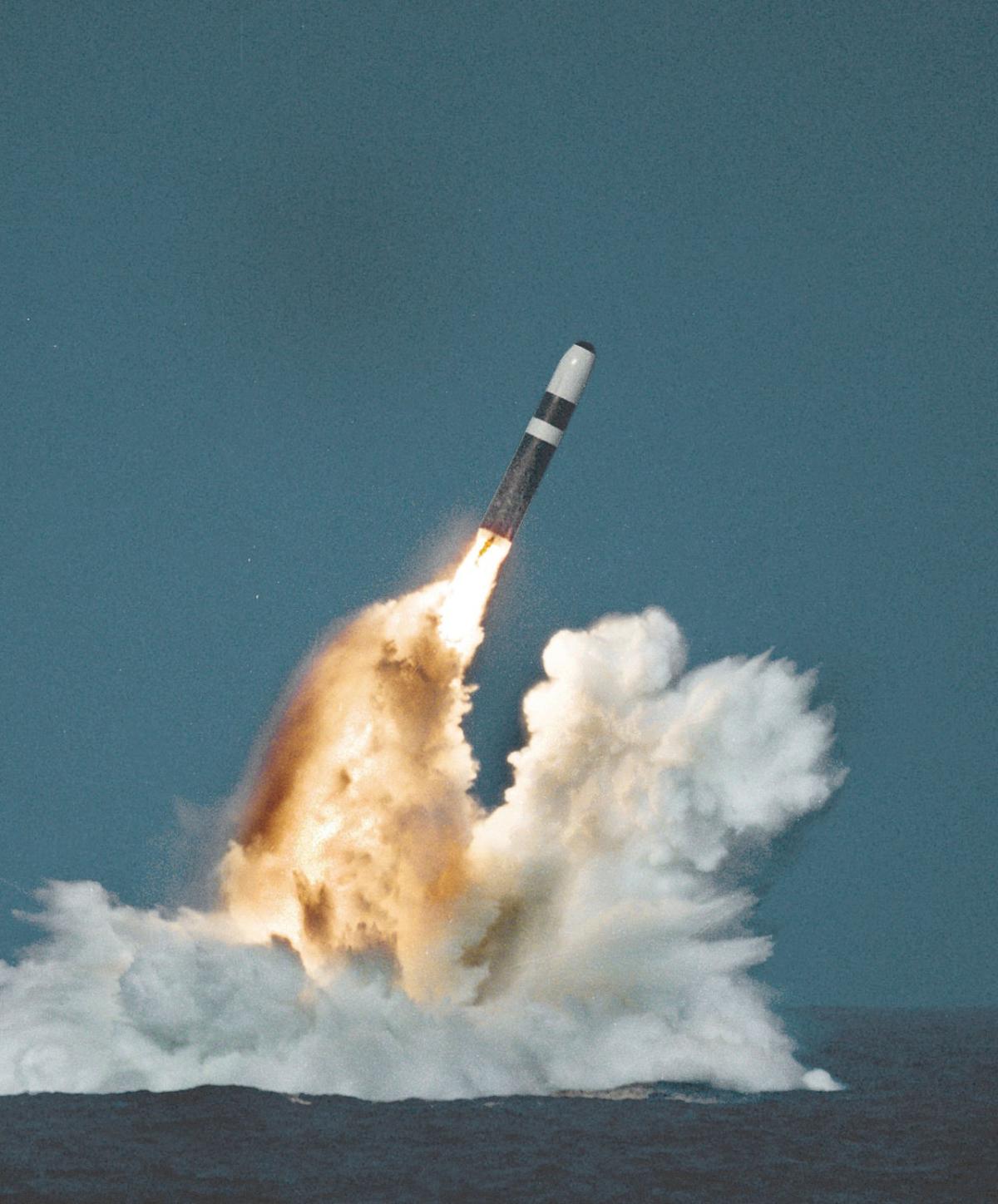
The principle of “mutual assured destruction” (MAD) is central to the nuclear strategy of the US (and other nuclear powers). A potential enemy must know that a nuclear attack will not go unanswered without devastating retaliation. Ohio-class submarines are the most reliable means of ensuring this, as they are highly likely to survive even a surprise attack and strike back. This is why they are also referred to as classic second-strike weapons.
The mission zones of American strategic submarines (especially the Ohio-class SSBNs) are secret, but publicly available sources provide a fairly good picture of where these boats typically patrol. These zones are called “Strategic Deterrent Patrol Areas.” They are: the North Atlantic between North America, Iceland, and Norway; partly south of Greenland due to its proximity to Russia (North Sea) and Europe; west of Norway, north of Scotland (observation of northern Russian fleet movements); Arctic Ocean, occasionally under ice (costly, but provides maximum concealment, proximity to northern Russia); Caribbean & Western Atlantic (close to the east coast of the US, sometimes as far as Bermuda, safe retreat, ideal for undetected launches); Western Pacific, Philippine Sea, near the Mariana Trench, between Guam, Japan, Taiwan (close to China, North Korea, and Russia); South China Sea; Bering Sea/Aleutian Islands, North Pacific, west of Alaska (observation of Russian Pacific Fleet).
First strike or second strike weapon – a bogus debate
Our sleepy-headed media and some otherwise serious analysts are trying to appease the world with the argument that these nuclear submarines are purely second-strike weapons and that Russia (and the rest of the world, which is concerned about a nuclear war) need not worry because these weapons would only be used for defense and deterrence after Russia had launched a nuclear attack first. This fairy tale is simply dismissed by authoritative voices.

John Bolton, former National Security Advisor in the first Trump administration, said the following in an interview (at minute 37:00) on CNN on August 3, 2025:
„And as I said, while the ballistic missile submarines are core to our second strike capability, they are also perfectly capable of being part of a first strike on Russia. So you could see people in the Kremlin obviously always nervous about our capabilities, believe that Trump is trying to insinuate that he may be considering a first strike, which is even more dangerous.“
John Bolton
Even without extensive military training, it is easy to understand that such equipment can be reprogrammed without any problems.
Propaganda noise or a serious threat from Trump?
In a conversation with Judge Napolitano on August 1, 2025, Scott Ritter explained the dangers to world peace that Trump's announcement could pose.
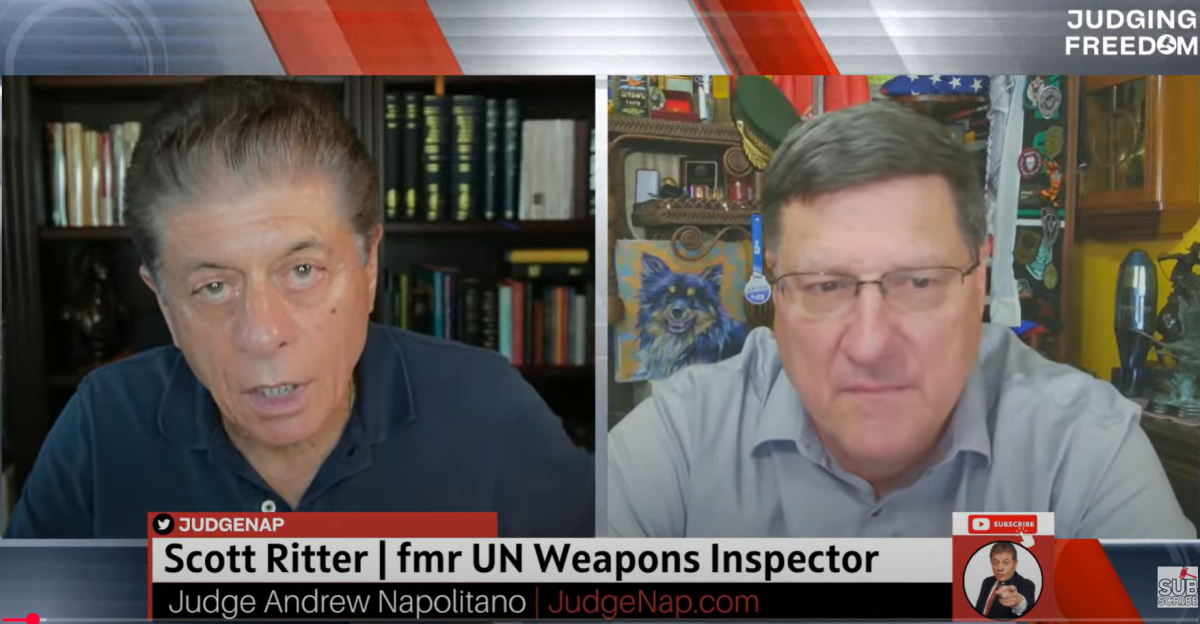
Ritter explains: Of the 14 Ohio-class submarines that are likely to exist, between six and nine are operational. The others are being maintained and equipped in port or are en route to their destination. At least two are permanently stationed in the Atlantic and two in the Pacific, where their missiles can attack any potential threat to the US. Additional submarines can be deployed on certain occasions. This was recently the case, for example, when an additional Ohio-class submarine was ordered to the Indian Ocean, whose Trident missiles with their W76-2 warheads with low explosive power (“low yield”) could have attacked Iran on the orders of the president. It did not happen, but the preparations were made.
So if Trump now orders two additional ships closer to Russian waters, this poses a serious additional threat to Russia because the distance to the target and thus the warning time for countermeasures is reduced. In addition, the ballistic missiles will fly toward their targets on a much flatter trajectory, causing additional problems for radar detection.
Further escalation by the US on European soil
General Christopher Donahue on Kaliningrad
Larry Johnson reports that General Christopher Donahue stated in mid-July 2025 during the Association of the US Army conference in Germany that NATO and US-allied forces are now capable of “neutralizing” or “taking out” the Russian exclave of Kaliningrad from the ground in an unprecedented and much faster timeframe than previously possible. He described Kaliningrad as approximately 47 miles wide and surrounded on all sides by NATO countries, making it vulnerable to ground operations. This statement was made in connection with NATO's “Eastern Flank Deterrence” plan, which aims to strengthen military capabilities and readiness in the Baltic Sea region.
Donahue's remarks sparked strong reactions from politicians and citizens in Russia. Leonid Slutsky, chairman of the Russian State Duma's Committee on International Affairs, warned that an attack on Kaliningrad would be considered an attack on Russia itself and would trigger all necessary retaliatory measures in accordance with Russia's nuclear doctrine. The Russian side considers Kaliningrad to be strategically important and any NATO attack on it to be a significant escalation that could potentially provoke a nuclear response.
Words are one thing, but actions speak louder than words, and Trump has approved a measure that leaves the Russians no choice but to conclude that the United States is preparing an attack on Russia ... He has ordered the deployment of nuclear weapons to Europe.
Deployment of nuclear weapons to Europe
In the 1990s, the US closed or consolidated many bases. Weapons were withdrawn from some national bases and concentrated at fewer main air bases instead of being returned to the US. For example, bombs were moved from smaller bases in Germany, Italy, and Turkey to Ramstein, Ghedi Torre, and Incirlik.
In the early 2000s, all US nuclear weapons were withdrawn from Greece, and around 2007, the last bombs were removed from the British air base RAF Lakenheath, ending more than 50 years of US nuclear weapons presence in the UK.
Now, in a significant U-turn, the US has stationed B61-12 free-fall bombs in Europe. Deployment locations for B61-12 free-fall bombs in 2025:
• RAF Lakenheath (United Kingdom): The B61-12 returned to the UK for the first time since 2008, with delivery to RAF Lakenheath confirmed for July 2025.
• Kleine Brogel Air Base (Belgium)
• Büchel Air Base (Germany)
• Aviano and Ghedi Air Bases (Italy)
• Volkel Air Base (Netherlands)
• Incirlik Air Base (Turkey)
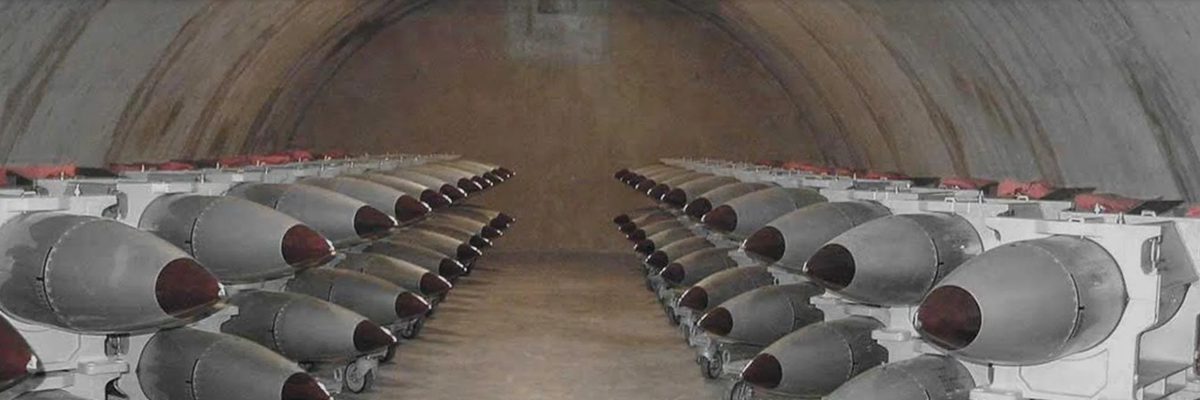
These bombs are now distributed among these six main bases in five NATO countries, with a total of approximately 100 to 150 US B61-12 bombs forward-deployed. The deployment at RAF Lakenheath in the United Kingdom is a significant strategic signal, as it marks the first return of US tactical nuclear weapons to British soil in over 15 years.
Attacks on radar stations
During the night of May 22-23, 2025, the strategic Voronezh-DM/M radar stations in Armavir (Krasnodar Krai, southern Russia) were damaged.
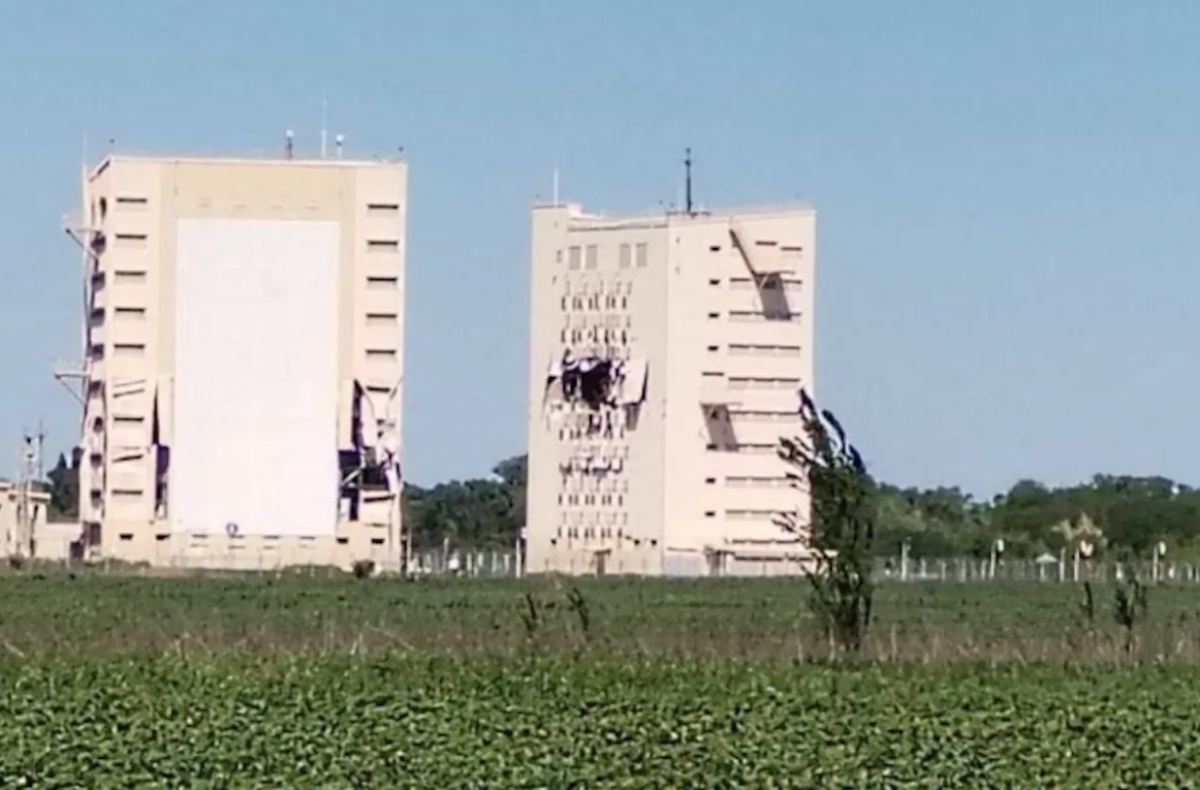
On May 26, 2025, another attack took place near Orsk on the Kazakh border, approximately 1,800 km deep inside Russian territory. There are indications of damage to the radar station.
These radar systems serve as part of Russia's nuclear early warning system and are therefore part of the nuclear triad – specifically as part of reconnaissance.
Attacks on Russian nuclear bombers
In an operation codenamed “Spider Web,” Western intelligence forces carried out a drone attack on at least four Russian air bases in Siberia (including Irkutsk, Murmansk, Ryazan, and Ivanovo) on June 1, 2025. The targets were strategic bombers (Tu-95, Tu-22M3) and A-50 early warning aircraft – all part of the nuclear-capable air force.
Intermediate-range ballistic missiles (IRBMs) and other long-range weapons in Europe
The Trump administration has also announced plans to deploy intermediate-range ballistic missiles (IRBMs) and other long-range weapons in Europe starting in 2026, with Germany being the first “host nation” for these systems. This deployment includes, in particular, advanced missile systems such as Typhoon and Dark Eagle, which have been mentioned in recent official communications and news reports. The Typhoon missile system (medium-range capability) is a mobile, ground-based system capable of firing multiple types of missiles (it is not a missile itself, but a multi-missile platform). It can fire the Tomahawk land attack missile with a range of 1,500–2,500 km or the SM-6 with a range of 320 km. The Dark Eagle is a long-range hypersonic weapon, also known as LRHW, with a range of 2,775 km. The Dark Eagle hypersonic missile was successfully tested after several failed attempts between 2021 and 2023. The system completed its first successful end-to-end flight test in June 2024, followed by a second successful test in December 2024.
A Russian response
Russia had already announced the production of the new medium-range missile “Oreshnik” in November 2024. Series production is now underway.
Russia's response should also be seen in close connection with the end of the INF Treaty (1987). The US withdrew from the agreement in 2019 and has since planned to deploy similar missiles in Europe (see above).
In November 2024, Russia also changed its nuclear threshold. According to the new doctrine, nuclear options could be considered in the event of a critical attack on Russia's territory or sovereignty – even by states without their own nuclear weapons.
On August 5, 2025, Russia declared that it would no longer observe a self-imposed moratorium on the deployment of medium-range weapons, including nuclear-capable variants. Kremlin spokesman Dmitry Peskov justified the new line as a necessary response to the West's “destabilizing missile potential.” Putin also announced the serial production of the “Oreshnik” hypersonic missile in Belarus, which he described as virtually impossible to intercept.
The situation is similar to that of August 1914
Against this backdrop, Ritter refers to Barbara Tuchmann's book:
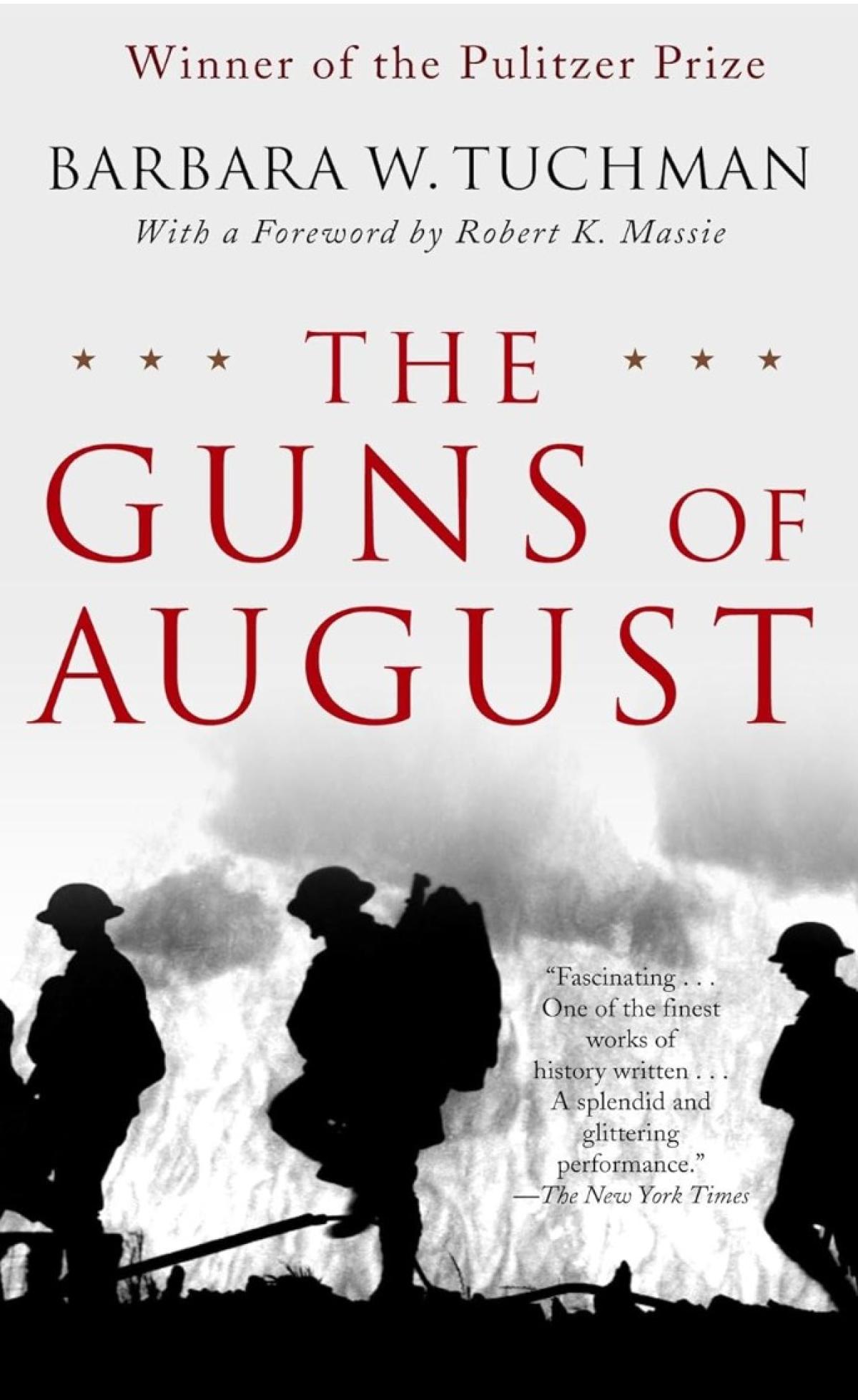
It describes the events and political decisions that led to the outbreak of World War I in August 1914. People thought, “Well, there's mobilization, but there won't be a war—there can't be—nobody wants a war.” And then suddenly it was there and destroyed the whole of Europe. Ritter believes that we are now in a similar situation.
„Right now, there are moves being made that if they're not stopped and reversed are going to lead to a general nuclear exchange between the United States and Russia. This is the direction we're heading. And I want to remind your audience that the CIA said last year there's a greater than 50% chance that there will be a nuclear war between the United States and Russia during the last months of the Biden administration. What the Biden administration was doing, as provocative as it was, pales in comparison to what this administration is doing. We're above 50% right now, Judge. We're heading into extraordinarily dangerous territory.“
Scott Ritter in conversation with Judge Napolitano on August 1, 2025
Level-headed voices from the American establishment
John Bolton, known as an ultra-hardliner
In an interview with CNN on the program “The Source” with host Kaitlan Collins, former National Security Advisor John Bolton expressed strong criticism of President Trump's order to position two nuclear-capable Ohio-class submarines near Russia.
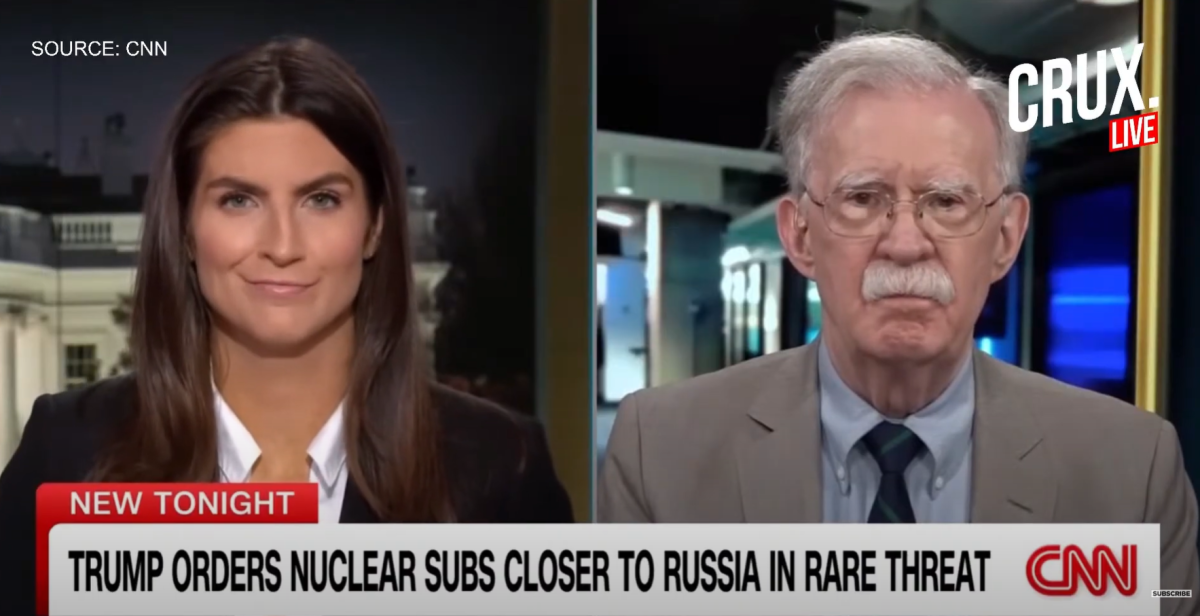
When asked by Kaitlan Collins whether he believed that President Trump's actions in this case were justified, Bolton replied as follows:
„No, I don't. I think it's very risky business for a lot of reasons. Most significantly, it seems to reveal that Trump doesn't really understand how our nuclear Navy works and and what their plan of operation is. (...) What Trump may not be understanding here and which the Kremlin could be misreading is how the ballistic missile, nuclear submarines that we have operate and how they function and serve basically as our second strike capability in the event of a nuclear war. The Ohio class submarines, the ones that carry the ballistic missiles, don't sit around in port. They're out in a complex obviously highly classified schedule to on what are called extended deterrence patrols. That is to say, there are a sufficient number of them in position right now to retaliate against a Russian nuclear attack. That's why they're put out there. So they don't have to go anywhere. They're already there and are hopefully undetectable so that a Russian or later a Chinese first strike can't take them out at the beginning. So to say he's going to move those kinds of submarines anywhere indicates he doesn't know how they work right now.“
John Bolton
And when asked whether anyone from his national security team is discussing this with Trump, Bolton replies:
„I have no idea. I certainly know from my own experience that you could find a tweet coming out any hour of the day or night on some national security issue that came directly from Trump. So, it's possible that's what happened here. I hope somebody from the Pentagon who understands the disposition of the nuclear force explains this to Trump at some stage.“
John Bolton
No comment from the Pentagon
The official statement from the Pentagon was:
„The U.S. Navy and the Pentagon declined to comment about Trump’s remarks … and referred all questions from reporters to the White House.“
Pentagon
Details about possible submarine deployments have not been confirmed. Such reticence is standard practice in sensitive military operations such as the deployment of nuclear submarines, whose locations and deployment plans are usually kept secret.
According to Reuters, “security experts” described Trump's move as a rhetorical escalation toward Moscow, but not necessarily a military escalation, as the United States already has nuclear-powered submarines that are operational and capable of attacking Russia.
The Russian response
Russia said on Monday, August 4, 2025, that everyone should be “very, very careful” with nuclear rhetoric. In its first public response to Trump's remarks, the Kremlin downplayed their significance and said it did not want to engage in a public dispute with Trump on this issue. During a press conference, Kremlin spokesman Dmitry Peskov explicitly said that nothing had changed in the military situation:
“American nuclear submarines are conducting combat patrols without any need for explanations from politicians.”
Dmitry Peskov
Conclusion
There is speculation as to whether Trump is engaging in this sabre-rattling because the Deep State and his sponsors are making life difficult for him with the Epstein affair and he needs to show that he is still in control. Whatever the case, the question posed at the outset remains: Are we really heading toward a nuclear escalation that will end in the destruction of the world, or is this just a storm in a teacup?
Based on the above analysis, the answer is neither - nor.
We have been able to show that a nuclear escalation on the part of the West is observable. However, it must be denied that this will necessarily lead to nuclear war. Fortunately, even among the warmongers, there are still people who have not forgotten that nuclear war means the end of the world. Actually putting this into action (the Samson Option) is reserved for doomsday apologists, who currently do not hold the levers of power. It seems that the concept of MAD – Mutual Assured Destruction – still works: no player can “win,” so no one attacks.
On the other hand, however, we must not overlook the signs of a spiral of escalation similar to that which preceded previous World Wars. It is the task of diplomacy (which, unfortunately, is currently unreliable) and, above all, of the people of all countries, at all levels, to work to break this spiral and strive for peace.
Let's go! Back to the days of 1983! Where is the peace movement?
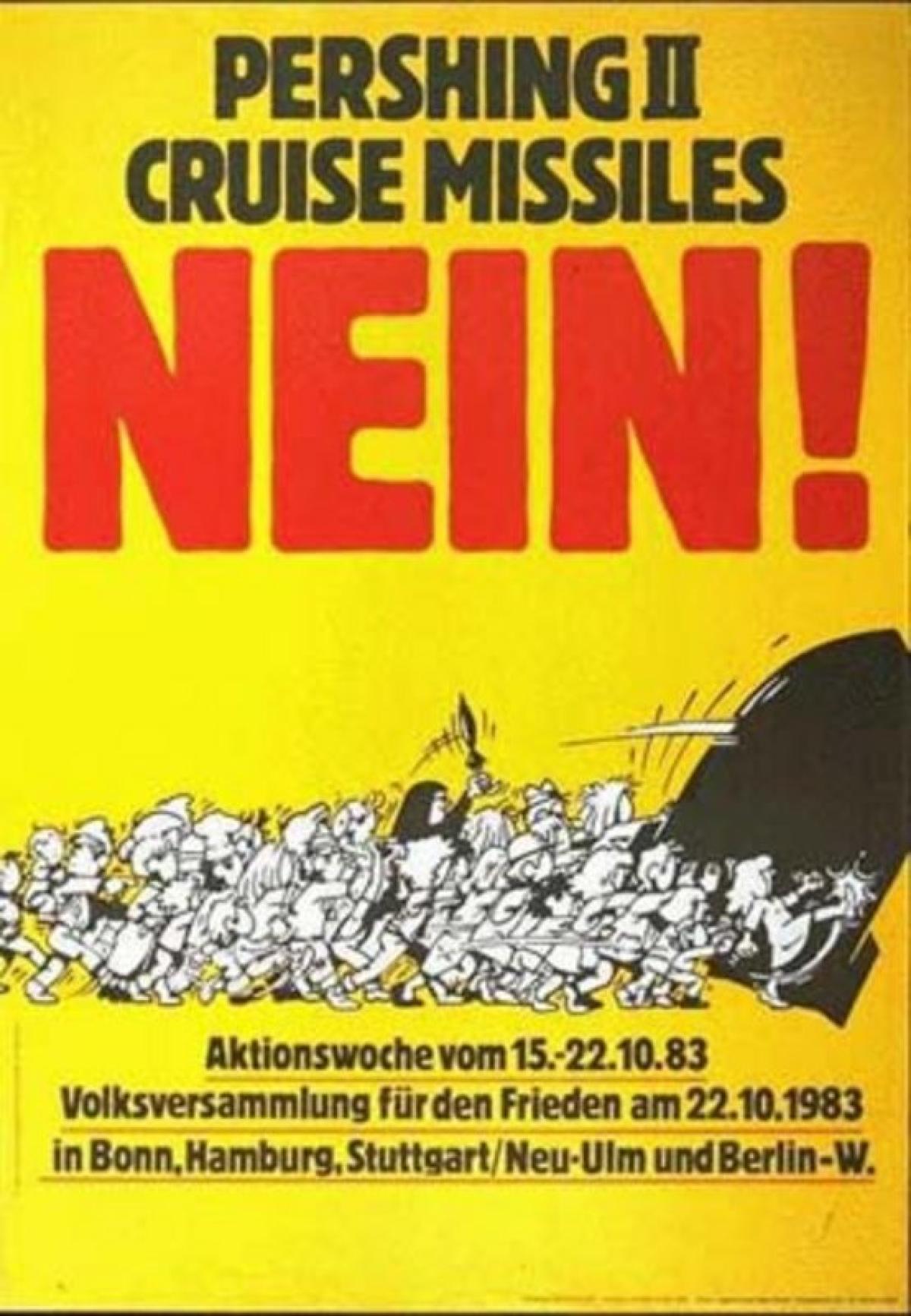
At that time, many people knew that Europe would become a nuclear battlefield if these missiles were deployed. On October 10, 1983, over 300,000 people demonstrated in the then federal capital. A human chain stretching around 108 km formed between Stuttgart and Neu-Ulm. These protests were nonviolent but very impressive due to their sheer size.

On October 22, 1983, large demonstrations took place in several cities. In Bonn there were around 500,000 people this time. Similar events took place in Hamburg, Stuttgart, Mutlangen (one of the deployment sites), and many other German cities.
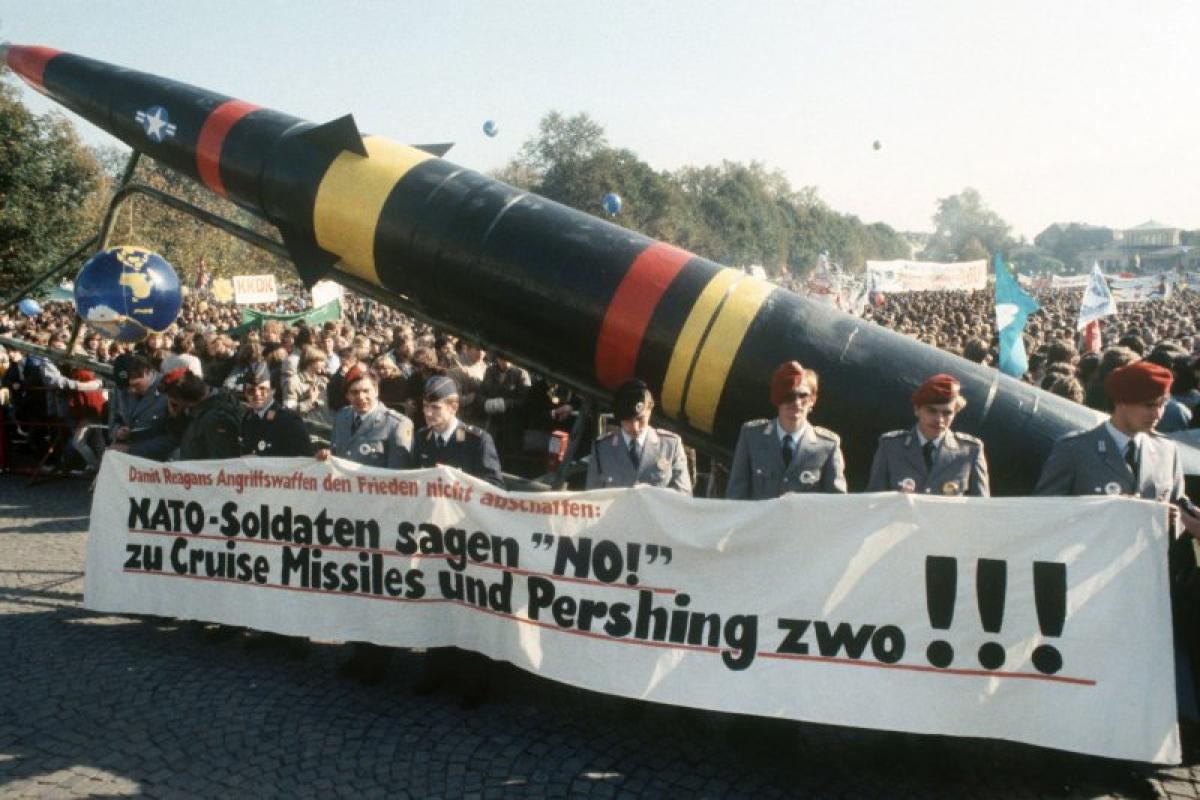
Where are they all now?
And what about politicians like Willy Wimmers?
Willy Wimmer, former CDU member of the Bundestag and long-time state secretary in the Ministry of Defense, recommended at the time that Chancellor Helmut Kohl should withdraw Germany from NATO exercises involving nuclear weapons. This recommendation was made in connection with NATO's so-called nuclear sharing exercises: “Able Archer,” a command and communications exercise for conducting a nuclear war in Europe—held annually in the 1970s and 1980s, with Able Archer 83 in November 1983 being particularly notorious; “Steadfast Noon,” a practical air force exercise as part of nuclear sharing, held annually, even today. Among other things, they practiced how US nuclear bombs (such as the B61 bombs stored in Büchel) could be delivered to their targets (e.g., Dresden, which was taken by the Soviets after the war game – inhabited by Germans) by German aircraft.
This is happening again today, and our politicians are ducking away and burying their heads in the sand.
«Donald Trump's nuclear war threat – only a storm in a teacup?»